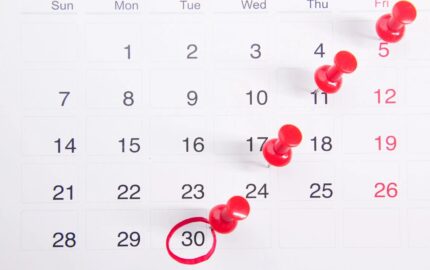[First in an occasional series aimed at helping readers find other online resources that focus on narrative journalism.]

Plenty of people are worried about the future of long-form journalism. Not Mark Armstrong. In April of this year, Armstrong started the “longreads” hashtag on Twitter in an attempt to create a community of people who could find and recommend great long-form stories available online. Having moved from the hashtag its own handle, @longreads is approaching a thousand followers. Not a big number in the Twitterverse, but enough people to pull together a wide range of material that is consistently worth reading. I spoke with Armstrong today, and he shared what motivated him to find a Twitter fan base for great online narratives.
Why did you start @longreads?
As a subway commuter and a longtime fan of the iPhone app Instapaper, I had been looking for the kind of magazine-length writing that I could enjoy during my commute. And there wasn’t a good place to find it. So I thought that the Twitter community and the people using these iPhones apps would be a great place to start as far as recommendations.
I started up an account and began collecting a handful every day. Pretty much just the stuff I wanted to see—mostly nonfiction, magazine-length long-form journalism. And there just isn’t a lot of it around. I thought there would be other people like myself who were looking for this kind of reading. I think right now is really a perfect time for long-form journalism because of the iPhone, because of these apps that are out there. It’s changed the online reading experience to going from little nuggets that you consume between doing other tasks to something you can sit back with to read in a relaxed setting or on a commute. These are really the places where long-form journalism can work—not so much on a laptop at work.
So Give Me Something To Read came before you?
Yes, that’s Marco [Arment], who developed Instapaper.
I don’t think all our readers will know what Instapaper is.
Instapaper is an offline reading tool—it’s the equivalent of finding a great story online and printing it out to read later. You get a little bookmark on your browser and press “Read later,” and it saves the story for you. You can read online or offline—you don’t have to have a connection later when you go to read it. There are a lot of other apps out there, too. There’s one called “Read it later.” I think there are people that do the same thing using note-collection tools—tools with which you can save your favorite bits of the Web for consumption later. It’s interesting that there aren’t more of them out there. There are a lot of iPhone apps that mimic news sites. There’s Kindle for iPhone, as well.
I find myself spending at least a half-hour a day reading on my iPhone. It’s accessible to me at any time. It’s a really pleasing reading experience.
If we want to talk about the business of journalism down the line, I think there’s a lot of opportunity in taking journalism into an iPhone for mobile reading experience versus trying to do it on a laptop.
Your optimism is counter to some thinking on long-form journalism right now.
I know the magazines themselves are in a very tough position. But speaking strictly in terms of formats, a magazine story is perfect for a half-hour commute.
I would hope that mobile will open up those opportunities. Probably it still remains to be seen. Personally and anecdotally, I know I’m reading a lot more now from online sources than I ever did before, specifically because of how I’m doing it. It’s a better reading device than starting a story of that length inside your browser on your laptop at work. With the iPhone, it’s become a lot easier to do that. I’m reading in what consultants call “a lean-back setting” as opposed to a “lean-forward setting.”
I heard you were going to try to do something bigger with @longreads. Is that true?
It’s definitely something I’m kicking around. We’d love to be able to expand into a real site. But I think I can’t make any major promises at this point. I’d love to get something going in the coming months. And there have been a lot of ideas, working with a few other friends on how this could work. Right now I’m content to do just what I do, just gathering a number of tightly curated long reads in this Twitter channel.
I think Twitter is a great forum. It opens up opportunity for long-form journalism as well. That really helps things as well. When you get into a bigger story, you’re committing your time. You want to know that what you read will be good.
What is your day job?
Right now, I’m developing digital content for a small startup. I come from a very non-long-form journalism background. I was news director at People.com for some time. I’m currently doing some other visual content work. From my perspective, it is a perfect time for online magazine journalism.
Who are some of your favorite narrative journalists?
Chris Jones is fantastic, as are a lot of the other writers who work at Esquire. I don’t know if this qualifies as narrative, but Matt Taibbi at RollingStone—I love to read his pieces. I just love going back and getting people’s recommendation on old, archived stories, too.
How many people a week send you stories?
It’s a small but loyal group. An engaged group. The most fun for me are the people who dig into the archive to pull out some of the classics, like “Frank Sintatra Has a Cold.” It’s been a lot of fun to see what’s out there. It’s interesting to see where this stuff is coming from, a traditional media source, an online only site, or something someone wrote on a blog.
In addition to the material people send, what are some of the places you find stories?
Of course, there’s Give Me Something To Read. Then there’s Gangrey.com. And TheBrowser.com, which is I think is done by a former writer for The Economist. There’s a community that’s gathering around to support and share this kind of content. More than anything else, it’s exciting to see people with the same interest.
Given that the Web is a big place, it’s very surprising how little long-form material is actually online. I think that’s going to change.


